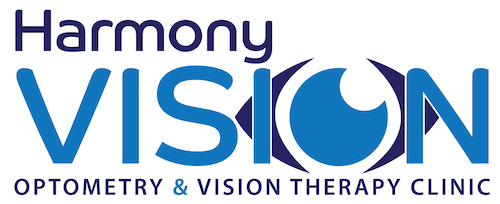Recent Advances in Technology & Research Assist Those with Short-Sight
Gone are the days of “simple sight-correcting glasses” for myopia, says Paul Graham, an Optometrist from Harmony Vision.
What is Myopia?
Myopia, also known as “short-sight” is a condition that makes it difficult to see clearly at long distances. The condition often begins in childhood or teenage years, and may continue into adulthood. In the past, the condition was simply corrected with glasses, contact lenses or laser eye surgery that made things far away clear again. “The problem with this solution,” says Paul, “is that each year patients find themselves seeking stronger and stronger lenses, in order to keep up with their worsening sight”. It seems that even though glasses treat the symptoms of blurred sight, they do nothing to necessarily treat the underlying cause of the degeneration.
New Research
There new treatments showing promise, especially children and teenagers! In some parts of the world, myopia has become an epidemic, with more than 90% of teenagers suffering the condition in some Asian countries. This sharp rise, has seen the condition attracting more attention with researchers looking into how and why the condition progresses. “There is still a lot we don’t know about myopia”, says Paul “however, some exciting new research occurring right here in Australia is giving patients the option of treatments that improve their sight, whilst at the same time slowing or even halting the progression of the condition as well”. This is important for many reasons, in particular because moderate to high levels of myopia carry increased risk of eye diseases such as retinal detachment, which can lead to permanent vision loss. “These treatments allow patients to take some control of their vision long term.”.
Myopia Treatments
New treatments include a variety of lens options. Orthokeratology is one such option which uses a specially designed contact lens to reshape the cornea (the front surface of the eye) overnight whilst the wearer is asleep. “Upon waking, patients literally remove the lens and see clearly all day without glasses, contact lenses or surgery,” says Paul. Other treatments include both spectacle and contact lenses specifically designed for myopia. “Research shows us that it is the outer part of the lens that has most effect on the eye’s tendency to become shortsighted. These new myopia lens designs incorporate a central sight correcting zone with a peripheral zone to help slow the progression”.
Earlier Detection
Myopia research is also looking at ways to identify the condition earlier, with the hope that it may be possible to prevent or slow it’s onset. For further information about myopia research and treatments, go to: www.visioncrc.org; www.nospecs.com.au; or www.optom.unsw.edu.au/research/rokindex.html
